Repair and refurb: how to extend a crane’s life by up to 20 years
10 February 2022
Repairing and refurbishing a crane can extend its working life by up to twenty years and it can end up saving a huge amount of money, time and planning for new equipment. Niamh Marriott reports
When starting to look at options for a specific crane and what to do with it once it becomes aged, Dave Wood, director at Washington state, USA-based provider of heavy-equipment repair and restoration services Wheco Worldwide Services, recommends looking at whether the equipment needs to be rebuilt, remanufactured or refurbished.
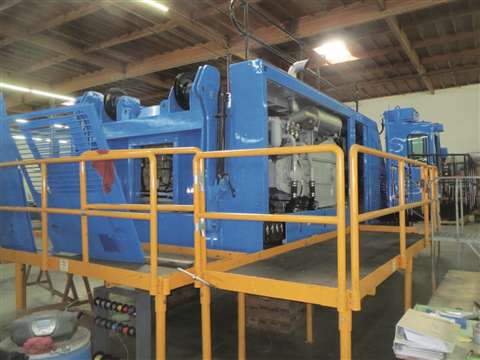 Wheco completely remanufactured a 300 tonne lattice crane from the ground up
Wheco completely remanufactured a 300 tonne lattice crane from the ground up
“We always start the process by having discussions with the customer on what they are looking for at the end of the day,” he says.
“Rebuild can be repairing what is broken or worn out currently. Remanufacture is restoring the crane to like-new condition from the ground up. Each and every part and component is brought back to like-new. We can upgrade items such as engines and electronics. Refurbishment is mainly a clean-up of what you have. It does not go as deep as a remanufacture. We may not replace the wiring, only freshen it up and repair or replace what is worn or damaged.”
Wood explains, “Typically, this is where we sit down with a customer and prepare a list of what needs to be done and build on that. If the machine has been well maintained and the customer has good records, we may not touch a lot of the components. Things like the engine or slewing bearings may have been replaced recently and still have a lot of hours left in them. Or the customer’s use of the machine may not put wear and tear on some portions of it.”
Once you have decided what needs to be repaired, remanufactured or refurbished, you can extend a crane’s working lift by 15 – 20 years, which is a huge feat, says Wood. Wheco has been in the crane and heavy equipment rehabilitation business for more than 40 years and, during this time, has seen the interest in repairing existing equipment increase.
Though it sounds very impressive, a twenty-year life extension might not always be required, and in fact, “some customers are only looking to get another three to five years or just through the next job,” Wood says. “That is why we try and tailor each project to fit the customer’s needs. It comes down to economics and return on investment (ROI).”
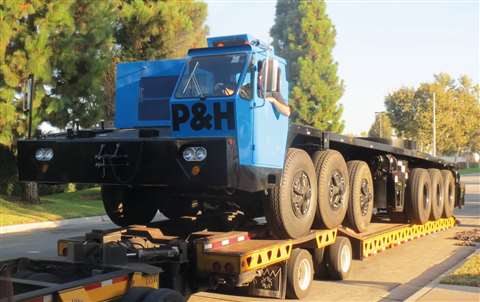 The chassis of a 300 tonne crane was completely remanufactured by the Wheco team in the USA
The chassis of a 300 tonne crane was completely remanufactured by the Wheco team in the USA
Wood explains, “We recently completed a 2 million dollar remanufacture that will give the customer 20 years if properly maintained. This was to a crane manufactured in the 1980s and had a special use and a low operating cost. We also recently did a duty cycle machine that we could give another 10 years to it for half the cost of a new unit. The newer units did not offer any added production benefits so it made sense to the customer – again ROI.”
World’s largest crane manufacturers
Many of the larger crane manufacturers have their own in-house repair and refurbishment services. Wisconsin, USA-based crane manufacturer Manitowoc has run its EnCore refurbishment programme since 2011 and has global repair hubs. The processes offered include everything from rebuilding cabs or boom cylinders to updating all systems and renewing electrical harnesses, instruments, drive-lines, hydraulic components and hoses. A Manitowoc spokesperson says, “Whether your crane requires a repair due to damage caused by an accident, or needs an end of service life rebuild, this service is a viable option.”
It is not always economically viable to repair a crane, says Wood. “Sometimes it makes more sense to sell the machine and put that money along with what would have been spent in a refurbishment or remanufacture toward a newer, lower hour machine.” He also notes other reasons that may force the choice to abandon any repair work.
“It is different for each customer. Some may want to only get a few more months or years out of the machine. Older units can cost a lot of money to move versus newer machines but maybe the use of the machine is to sit on one site for many months or many years, which negates a high move costs.
Peter van Oostrom, global projects assets director at Mammoet, says it can be more economical to keep older equipment running, depending on the specific equipment. It’s also more sustainable, he argues.
“Mammoet has a large equipment fleet and a very broad spread of different manufacturers, types, and models. A large part of the fleet is easily replaceable – for this equipment we continuously monitor utilisation and we have a standard replacement strategy that we follow. At the moment we replace equipment, we always check the most sustainable option that is available.”
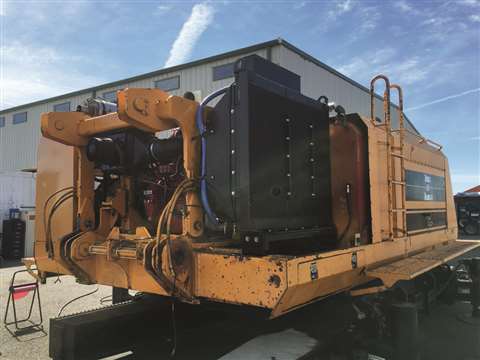 Replacing the engine in this Manitowoc 888 crawler allowed it to be brought up to current exhaust emission specification with a Tier 4 replacement
Replacing the engine in this Manitowoc 888 crawler allowed it to be brought up to current exhaust emission specification with a Tier 4 replacement
“Other areas of the fleet are not so easy to replace, as these are very specific and unique pieces of equipment, where we cannot easily find a replacement in the market. Looking at our biggest cranes, it can be sustainable to continue with them instead of replacing them, as the production of materials for a new crane definitely has an impact on sustainability and carbon footprint.”
Refurbishment is not a core business for Mammoet, but it can be the best option sometimes. “If we decide to refurbish equipment, this is always done in co-operation with the manufacturer, as they have the knowledge of the design of the equipment and also need to give advice on what to do,” says van Oostrom. “Depending on the work that needs to be done, it can be decided to do it ourselves, but preferably we give the order to the manufacturer.
“The advantage to working with the manufacturer is that they are able to certify the refurbishment, which gives us confidence and confirmation that all works were done according to the correct procedures and guidelines,” he says.
Some crane manufacturers, including Mammoet, do resell their used equipment, and this practice can extend the working life of a crane. “We offer equipment for sale on the Mammoet Used Equipment website (usedequipment.mammoet.com), which is managed by the Global Projects and Assets team,” says van Oostrom. “Recent years have shown that this is a successful way of working; we have extended the customer base that has bought equipment directly with Mammoet. The advantage of selling ourselves is that we have all details and insight into what the equipment has done, and we can give the best information and support to potential buyers.”
Rusch Crane Services
Continuing maintenance is key to avoiding costly remanufactures and repair work, says Ruud Schreijer, CEO at crane boom repair specialist Rusch Crane Services.
“Have your cranes maintained regularly and make use of high-quality experts,” he says. “It certainly pays off in terms of a longer service life, less downtime and less chance of unexpected expenses.”
The company has been operating since 1992, repairing and inspecting all kinds of cranes, both on land and offshore. Currently the company is working on two YME cranes that were transported from Norway to its workshop in the Netherlands. “Right now we are inspecting and repairing these big guys to get them ready for sale,” says Schreijer.
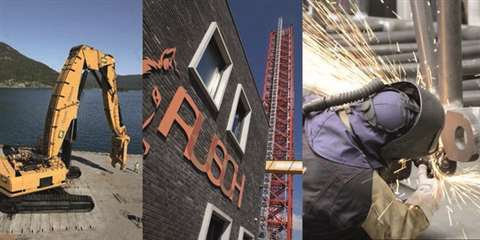 Sometimes a new solution is better than repairing the old part, says Rusch Crane Services CEO, Ruud Schreijer
Sometimes a new solution is better than repairing the old part, says Rusch Crane Services CEO, Ruud Schreijer
“Another project we are proud of is the repair of a 700 tonne crawler crane boom head. It is quite common for manufacturers to conclude that a crane or part of a crane is ‘end-of-life’. This does not always mean ‘impossible to repair’.”
He even believes that older cranes are most cost efficient to repair rather than replace. “In some cases, repair is more cost-effective than replacement, especially with cranes older than five years. With the 700 tonne crawler crane, we used certified material similar in chemical composition and strength as the original, and our own certified weld techniques to repair the boom head. We also did magnetic testing of the welds and tests on the construction itself.”
Avezaat Cranes
Avezaat Cranes is an independent company specializing in mobile crane and crawler crane boom and steel structure repair. The company has been operating since 1939 and can work on the smallest repairs, such as replacing a few lacings on site, all the way up to a complete repair of a tipped over crane, which actually is more common than you might think, says director Bert Avezaat.
He says its important to have properly trained technicians on the repair works. “There are many parts of a mobile crane which can be appointed as critical, so it is very important that the works are carried out by certified and experienced people.”
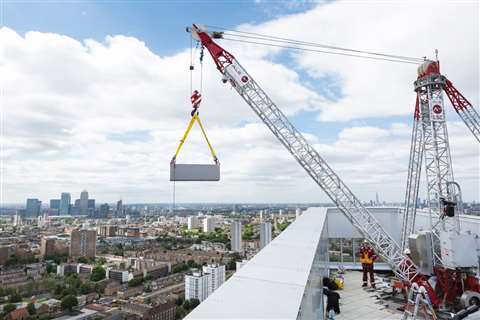 Mammoet says hydraulic wheeled cranes have the shortest technical lifetime, followed by crawler cranes. The big ring cranes have the longest life expectancy
Mammoet says hydraulic wheeled cranes have the shortest technical lifetime, followed by crawler cranes. The big ring cranes have the longest life expectancy
“What we still see happening sometimes is that due to using a bad repair procedure or using the wrong materials for repairing boom sections things go terribly wrong. When carrying out a bad repair it will lead, sooner or later, to failure of the crane and it is terrible to see how some people do not take crane boom repairs seriously. Boom sections and-or crane structures can be repaired but it must be done by companies who have the procedures and the experience to carry out this kind of specialized work.”
As the global crane industry continues to strive to reduce costs and improve sustainability, the need for trained repair technicians is only likely to increase. Sustainability is at the forefront of decisions currently, and rightly so but if it will cost less to remanufacture than replace, surely it would be wrong not to?
STAY CONNECTED


Receive the information you need when you need it through our world-leading magazines, newsletters and daily briefings.




